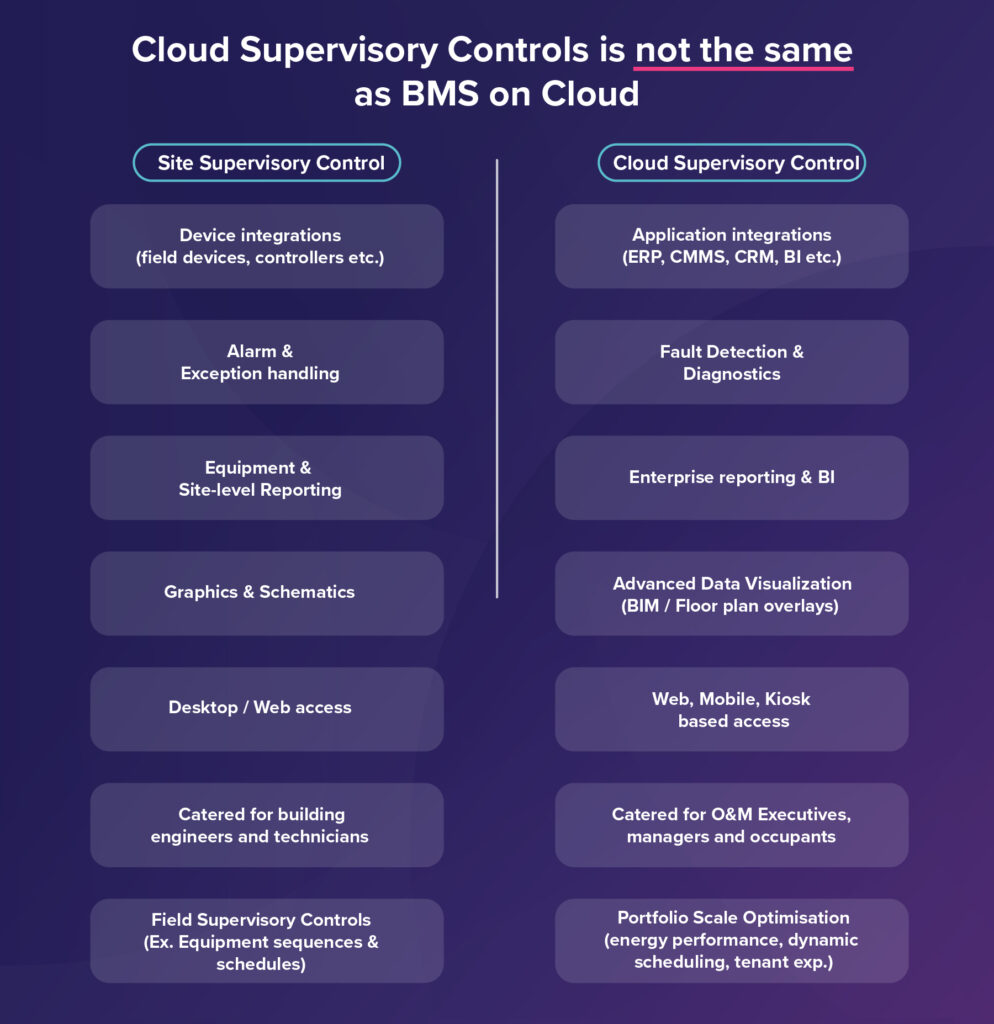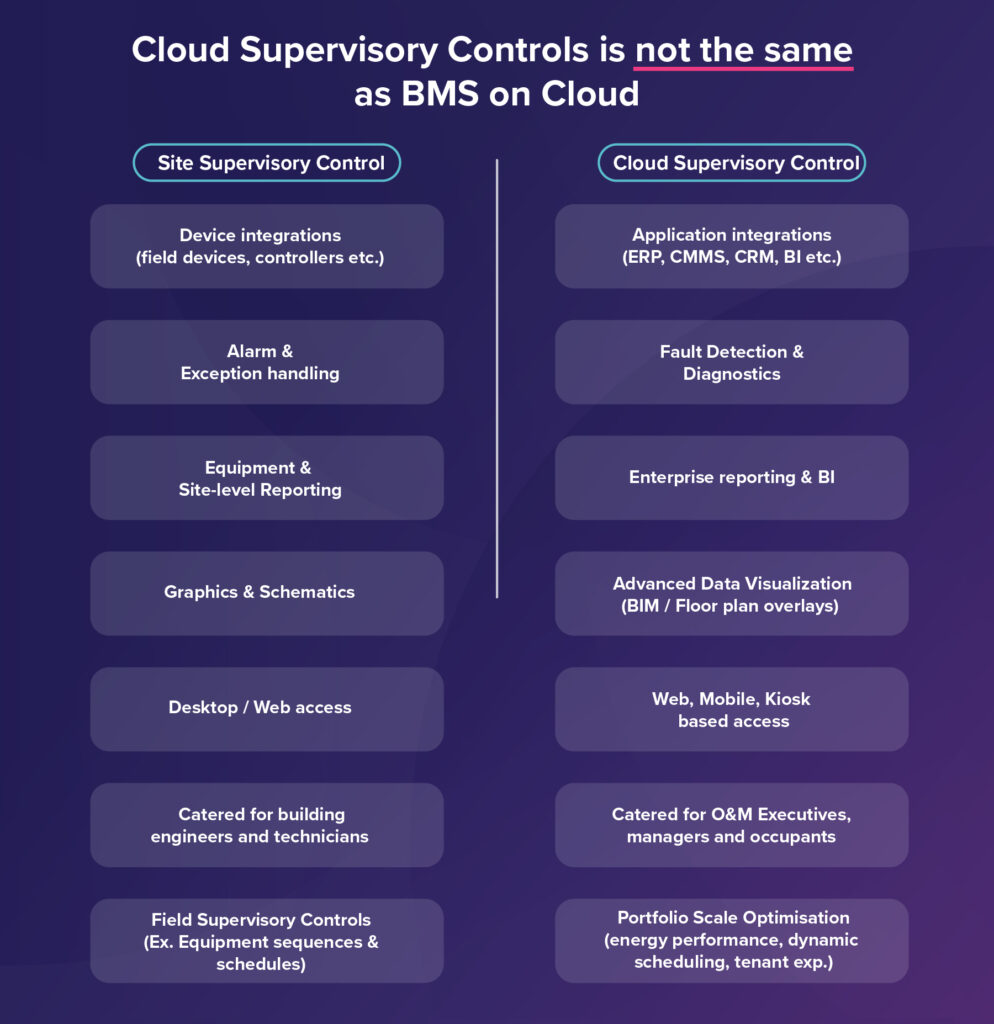
By Rajavel Subramanian, Co-founder & Head of Product, Facilio
From the very beginning, there has been little notable innovation around BMS limiting it to a site supervisory control software for building engineers.
With BMS, there is a case to be made for separation of hardware and software, with cloud based software delivering more than just the BMS functionality at scale across a portfolio of buildings rather than a single building.
Such cloud supervisory software can deliver not just scale and efficiency but enable a myriad of smart building use cases that do not get off the ground because of the “BMS bottleneck”.
The case for cloud-native supervisory platforms
Over the past decade, building operators who attempted to address the BMS problem have had to build solutions themselves with the help of IT solution vendors, experienced MSIs, or automation vendors.
Often these solutions were based on the same conventional BMS technologies, extending only control and monitoring functionalities even on the cloud, as opposed to more practical use cases like high-performance buildings, energy efficiency, and customer experience.
These outcomes demand different software capabilities and interoperability features that the traditional BMS systems lack owing to their on-prem nature.
In the face of the pandemic, increasingly complex constraints on building operations have drawn more attention to the drawbacks of the BMS. This highlighted the need for a cloud-native supervisory control that compliments site-level systems and delivers enterprise/portfolio-level applications to optimize O&M.
For instance, consider using occupancy data for HVAC optimization. While occupancy sensors are inexpensive, navigating the maze of complex integrations with multiple BMS vendors is a long, painful, and expensive process.
A cloud supervisory platform uses edge technology to access real-time information from multiple building systems, enabling tenant servicing systems to automatically adjust HVAC schedules or override setpoints in a building based on occupant requests.
And yes, a cloud supervisory platform is not the same as BMS on the cloud.
Towards portfolio-wide automation
BMS works on a site level to enable real-time equipment control and data processing, field-level integrations, alarms management, functional reports, and graphics.
Apart from enabling these functionalities to run effortlessly across portfolios from a centralized location, a cloud supervisory platform enables analytics across a large data set and deploying optimization strategies at a portfolio scale.
A cloud supervisory platform augments and not replaces existing BMS/site supervisory infrastructure to unlock the untapped potential of BMS data.
Thinking of the bigger picture
Imagine the potential for O&M efficiency when historical data from BMS collected over many years can be leveraged by a cloud supervisory platform by using a common data model and ontology.
You could apply analytics to unified data sets, achieve 360* visibility into operational data, and derive insights for all key O&M stakeholders, enabling automation at a portfolio level. Further, you could
- Deliver delightful end-user experiences with portfolio-level monitoring & visibility,
- Enable interoperability with enterprise operations and business applications to eliminate silos forever,
- Give visibility to all O&M stakeholders (owners, operators, tenants, and occupants) across web, mobile, or kiosk applications, and
- Normalize and democratize data for third-party access and do more with your data.
When data from BMS and sensors become readily available, an innovation barrier is lifted for real estate companies across asset classes to build solutions for countless needs in various O&M contexts!



